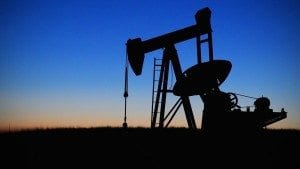The Most Common Offshore & Oilfield Injuries
March 18, 2016 @ 9:30 am

Updated: 12/10/2021
The offshore oilfield industry is openly acknowledged as one of the most dangerous work sectors. A September 2015 Bureau of Labor Statistics report confirmed that 2014’s average fatal injury rate for all U.S. workers in all sectors remained at 3.3 per 100,000 workers. However, for the oilfield industry, fatal injuries increased by 27 percent from 2013 to 2014, with 142 fatal injuries, making the rate nearly 16 deaths per 100,000 workers.
The Bureau of Ocean Energy Management’s Accident Investigation Reports provides a lengthy list of oil and gas-related accidents:
- Spill of Synthetic-Based Drilling Fluid
- Blowout and Fire
- Crane Accident and Injury
- Drillship Drawworks Failure
- Equipment Failure
- Fall and Fatality
- Fatal Accident Lift Boat-Coil Tubing
- Fatal Accident, V-Door Guide Post Failure
- Fatal Fall from Rig Pollution Pan
- Fatal Rental Crane Support Brace Failure
- Fatality from Falling Load
- Fatality and Loss of Well Controls
What does an oilfield injury mean for you?
Region VI Emphasis Program
In October 2015, OSHA published its Regional Emphasis Program for the Upstream Oil and Gas Industry, targeting Region VI’s exploration and production sector. The purpose was “to establish an enforcement initiative to reduce fatalities and catastrophic events in the upstream oil and gas industry.” Specifically, the report identified hazards that are leading causes of death within the oilfield industry.
OSHA Hazard Profile
OSHA’s Profile: Oil and Gas Well Drilling and Servicing further detailed the sources of many of these hazards. Together, the two documents paint an atmosphere of dangerous working conditions with no margin for error:
- Explosions and Fire. Well blowouts, drilling, tripping out and swabbing can release combustible gasses. Other hazards listed were welding or cutting near combustible materials, failing to control or maintain ignition sources near the wellhead and detonating perforating guns above ground, for example.
- Falls. Workers frequently fall from elevated rig areas, plummeting from rig floor to grade or open ocean. In some cases, openings lacked safety structures, or safeguards failed to secure workers to the rig.
- Being Struck. Workers are often struck by falling or moving pipes, tongs, spinning chains, kellies or rotary tables. Sometimes, high-pressure hose connections failed, allowing whipping hoses to strike workers.
- Becoming Caught. Clothing and extremities like hands, arms, legs and feet were at high risk for entrapment. Specific hazards included collars and tongs, spinning chains, pipes, rotary tables and drill strings. However, any area where contact distances rapidly shift or confine workers can prove fatal.
- Electrocution. Salt water and many of the chemicals used in the extraction process are corrosive. Electrocution can occur with the simplest of tasks, such as encountering faulty or worn wiring while changing a light bulb.
- Chemical Exposures. Hydrogen sulfide is colorless, accumulates in poorly ventilated areas and is highly combustible. It’s also extremely toxic, with delayed effects including respiratory paralysis, irregular heartbeat, nervous system effects, collapse and death. Many incidents of exposure occur during drilling and gauging operations.
- Rig Collapse. When weights exceed rigs’ rated capacities, structural overloads result. In some cases, rigs’ guy wires or anchors were improperly installed. In still others, rig masts were raised or lowered improperly, or neglect degraded structural integrity.
In addition to hazardous work conditions, incomplete or negligent rig assessment and inspection violations allow for a number of mechanical issues to arise, increasing the likelihood of fatal accidents offshore.
Complications
Due to the collaborative nature of the oil and gas industry, many parties are often involved in the extraction and refinement processes. When accidents do occur, it’s often difficult to pinpoint who is responsible. Furthermore, many offshore accidents go unreported or are misclassified as first aid issues; medical attention – when available – is often delayed. Unfortunately, these complications often leave workers suffering with debilitating injuries, unable to sort through the layers of bureaucracy, contracts and red tape on their own.
An Offshore Injury Attorney on Your Side
If you have suffered an offshore or oilfield injury and are seeking compensation, contact our team of offshore accident lawyers online or call 1-800-356-6776. Based in Opelousas, Louisiana, we’ve been serving St. Landry Parish and other communities throughout Louisiana for more than four decades. We specialize in helping victims of negligence, accidents and hazards receive the financial assistance needed to address physical, mental and emotional losses.
